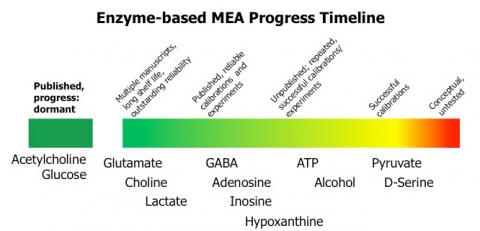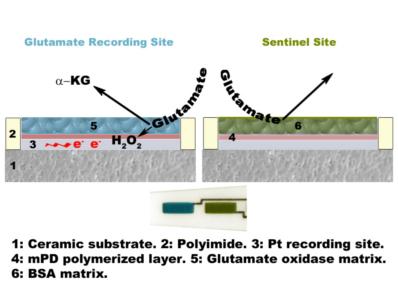Enzyme-based MEA
The immobilization of oxidase enzymes to the electrodes of allows neurochemicals that are not electroactive per se to be monitored using voltammetric techniques. Combining these enzyme-based strategies with selectivity coatings (Nafion®, phenylenediamine, …) and multisite electrode arrays, one can achieve self-referencing recording.
Glutamate MEA Biosensors
Enzyme-based microelectrodes can be used to monitor changes of L-glutamate directly in the extracellular space of the living brain. Immobilization of glutamate oxidase to the platinum sites of the MEA allows the measurement of glutamate, an otherwise non-electroactive neurochemical. Enzyme catalyzed oxidation of L-glutamate produces H2O2, which is further oxidized at the platinum electrode on the MEA, as shown in the figure on the right.
The ceramic-based microelectrode arrays have spatially defined and uniform size recording sites. By subtracting recordings from sites containing a specific oxidase enzyme with a selectivity coatings (recording sites) with those devoid of enzyme (sentinel sites), the contribution of interferents to the recorded signal can be subtracted.
Ceramic microelectrode arrays (MEAs) can be found at the CenMet Service Center (click here to leave Quanteon.CC and visit CenMet). CenMet offers a variety of design options of both uncoated and glutamate-oxidase coated MEAs.



